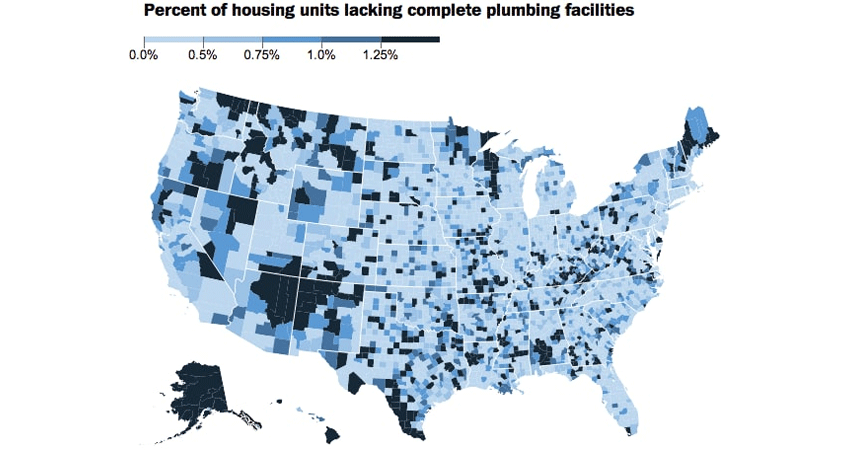By Hyon K. Rah, September 2020
As I write this, we are in the middle of a pandemic which has presented numerous challenges to us all. The pandemic also brought to the fore the inextricable connection between environmental, economic, and social sustainability through a revealing picture of inequity in the U.S. Owing to the advice of health experts to wash our hands often to prevent the spread of the virus, there is growing attention to the inequity in access to clean water.

A 2014 report found that 1.6 million Americans did not have indoor plumbing.
Today, over 2 million people in the U.S. do not have access to safe drinking water and sanitation1, and this number includes 1.4 million people that live in homes without indoor plumbing (running water, a sink, a shower or a bath, and a flushable toilet). That is not to say that the other 328 million U.S. residents that do have access to treated water and indoor plumbing can rest easy. The American Society of Civil Engineers gave the safety and quality of the U.S. drinking water system a “D” grade in its 2017 assessment.
This stark reality is often attributed to a combination of factors. Contamination at the sources of the water supplies is a significant one, as shown in communities near coal mines or fracking sites in the Appalachian region due in part to relaxed wastewater management regulations. Cities such as Flint, Michigan are still paying for the lack of government investment in infrastructure with their health and lives. Forty percent of the nearly 180,000-person strong Navajo Nation does not have running water, which has been detrimental to their pandemic resilience. In many communities such as Baltimore, Maryland, water prices have increased dramatically, and many people simply cannot afford to pay their water bills and maintain their water access.
On top of all that, weather and climate-related disasters have placed even more strain on our water resources and systems and the critical infrastructure that supports them. The U.S. had already had 10 billion-dollar weather disasters by the first half of 2020, well before peak hurricane season2.
These things matter because they affect us all in the end, one way or another. But first, we need to be clear on the facts and how they connect.
To put the issues of water quality and access into your own context, I encourage you to check out the two resources below:
- A map of the U.S. showing the percentage of housing units lacking plumbing by county – Where does your county stand?
- A link to check the quality of drinking water in your (or someone else’s) area by zip code: https://www.ewg.org/tapwater/
2 https://www.noaa.gov/news/june-2020-was-relatively-hot-and-dry-overall-for-us
This article is a modified version of the original post on NFBPWC’s September Newsletter (pp 13-14).
